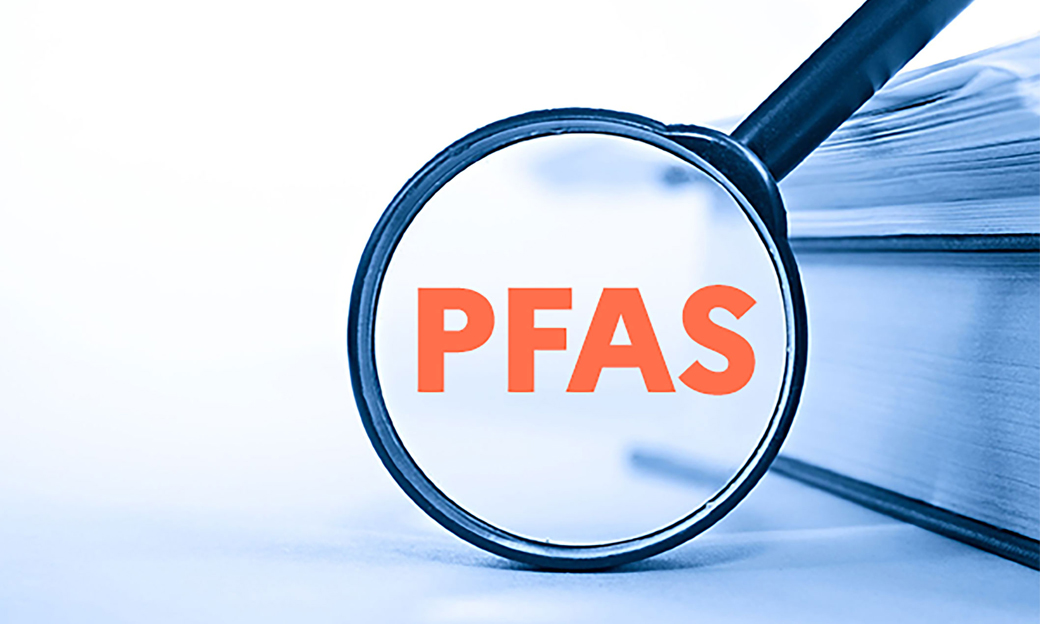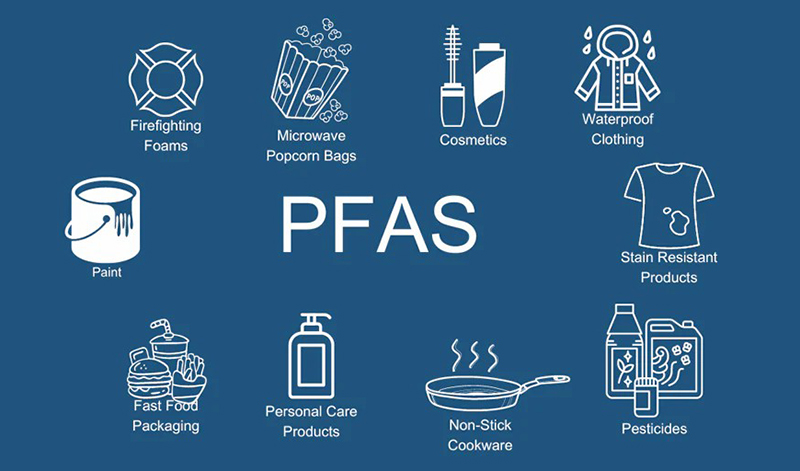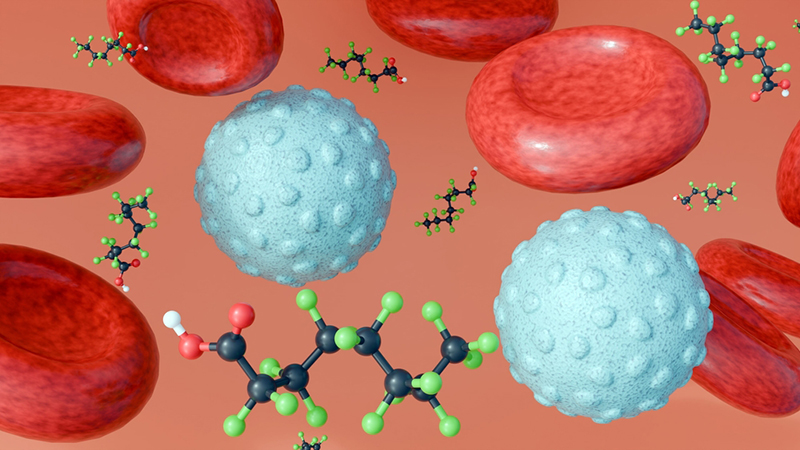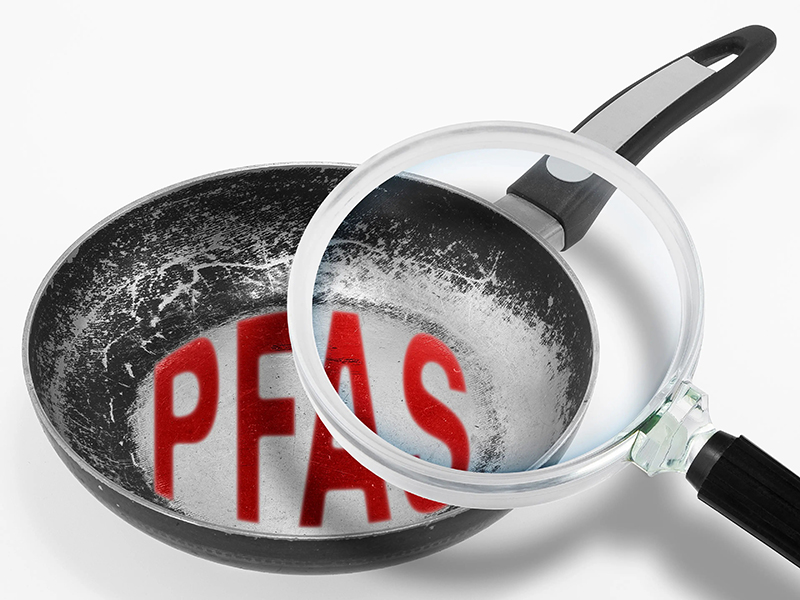
In recent years, scientific studies have uncovered a disturbing link between exposure to so-called “forever chemicals” and a heightened risk of high blood pressure (hypertension). These chemicals, formally known as PFAS (per- and polyfluoroalkyl substances), are found in thousands of everyday products and are now nearly impossible to avoid. But what exactly are they? How do they affect our cardiovascular health? And more importantly—what can we do to protect ourselves? Let’s break it down.
What Are “Forever Chemicals”?
“Forever chemicals” refer to a large group of synthetic compounds known as PFAS, which have been manufactured since the 1940s. They are valued for their resistance to water, oil, heat, and stains, making them incredibly useful in various industries and consumer goods. Common uses include:
Non-stick cookware (e.g., Teflon)
Water-resistant clothing
Food packaging (e.g., fast food wrappers, microwave popcorn bags)
Cosmetics (especially long-wear or waterproof formulas)
Firefighting foam
Industrial lubricants and cleaners
The problem? PFAS are extremely persistent in both the environment and the human body. They do not break down naturally and can accumulate over time, hence the nickname “forever chemicals.”

How Are PFAS Linked to High Blood Pressure?
1. Scientific Evidence
A growing body of research points to a clear association between PFAS exposure and elevated blood pressure. Notably:
A 2022 study published in Hypertension (journal of the American Heart Association) followed over 1,000 middle-aged women and found that higher blood concentrations of specific PFAS compounds—such as PFOA and PFOS—were linked to significantly increased risk of developing high blood pressure.
Other studies have connected PFAS with increased cholesterol levels, insulin resistance, kidney dysfunction, and other factors that are known precursors to hypertension.
These findings are consistent across various demographics, reinforcing the concern that PFAS exposure poses a widespread cardiovascular risk.
2. Biological Mechanisms
While more research is needed to fully understand how PFAS impact blood pressure, several plausible biological pathways have been identified:
Endocrine Disruption: PFAS interfere with hormone regulation, including cortisol and aldosterone—both involved in blood pressure control.
Kidney Function: PFAS may impair kidney filtration and sodium regulation, both of which are critical to maintaining normal blood pressure.
Oxidative Stress and Inflammation: Chronic exposure may promote systemic inflammation and oxidative damage to blood vessels, leading to arterial stiffness.
Vascular Dysfunction: Some PFAS may directly affect the lining of blood vessels (endothelium), reducing their ability to dilate and maintain healthy pressure.
Who Is Most at Risk?
While PFAS are present in the blood of nearly every person on Earth, certain populations face higher exposure levels:
●Communities near chemical plants or military bases, where PFAS contamination of soil and water is more likely.
●People who rely on well water or live in areas with PFAS-contaminated municipal water.
●Pregnant women and children, who are more sensitive to hormonal and developmental disruptions.
●Individuals with high consumption of packaged or fast foods, where PFAS-containing wrappers and containers may leach into the food.

How to Reduce Your Exposure to PFAS
Although it is difficult to completely avoid PFAS, you can take practical steps to significantly reduce your risk:
1. Filter Your Drinking Water
●Use a certified water filter that is effective against PFAS—look for NSF/ANSI 53 or NSF/ANSI 58 certifications.
●Activated carbon and reverse osmosis systems are generally the most effective.
2. Minimize Contact with PFAS-Treated Products
●Avoid non-stick cookware unless it's labeled PFAS-free. Use alternatives like stainless steel or cast iron.
●Choose clothing and textiles labeled as “PFAS-free” or “fluorine-free”.
●Limit use of cosmetics with long-wear, waterproof, or oil-resistant claims, especially without full ingredient transparency.
3. Reduce Packaged and Fast Food Consumption
●Many wrappers, containers, and liners used in fast food and takeout are treated with PFAS to resist grease. Opt for home-cooked meals using fresh ingredients.
4. Stay Informed
●Check your local water utility’s PFAS testing results (in the U.S., visit the EPA’s PFAS dashboard).
●Support legislation and policies that limit industrial PFAS emissions and require greater corporate accountability.
The evidence is increasingly clear: PFAS exposure poses a real and growing threat to cardiovascular health, including increasing the risk of high blood pressure. Given their ubiquity and persistence, PFAS may be one of the most significant environmental health concerns of our time.

Fortunately, knowledge is power. By understanding the sources of PFAS, recognizing their health impacts, and taking practical steps to reduce exposure, individuals and communities can begin to protect themselves and push for necessary change. It’s time to stop treating “forever chemicals” as background noise—and start treating them as a public health priority.
Subscribe means that you have read and agree to the Privacy Policy.
Subscribe means that you have read and agree to the Privacy Policy.
Copyright © Shenzhen Pango Medical Electronics Co.,Ltd, Ltd. All Rights Reserved.